
Question and Answers Forum
Question Number 120628 by TANMAY PANACEA last updated on 01/Nov/20

Commented by TANMAY PANACEA last updated on 01/Nov/20

Commented by TANMAY PANACEA last updated on 01/Nov/20
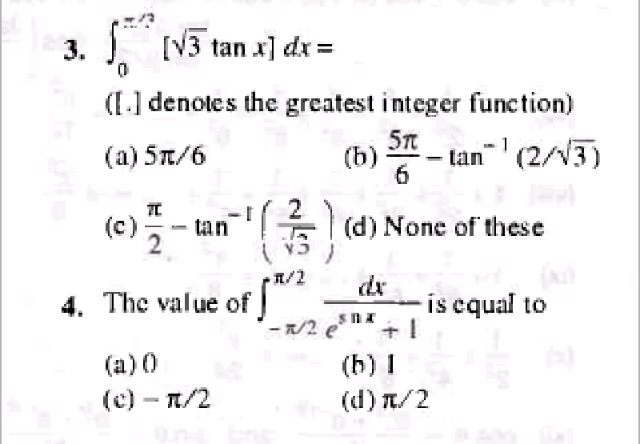
Commented by TANMAY PANACEA last updated on 01/Nov/20
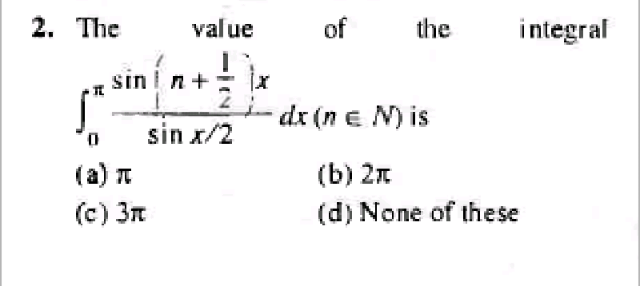
Commented by TANMAY PANACEA last updated on 01/Nov/20
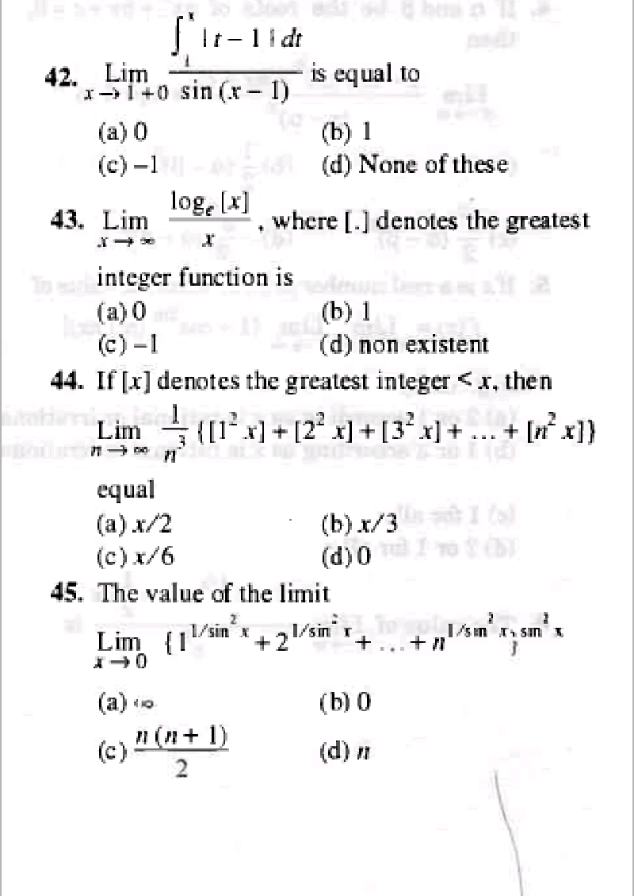
Commented by Dwaipayan Shikari last updated on 01/Nov/20
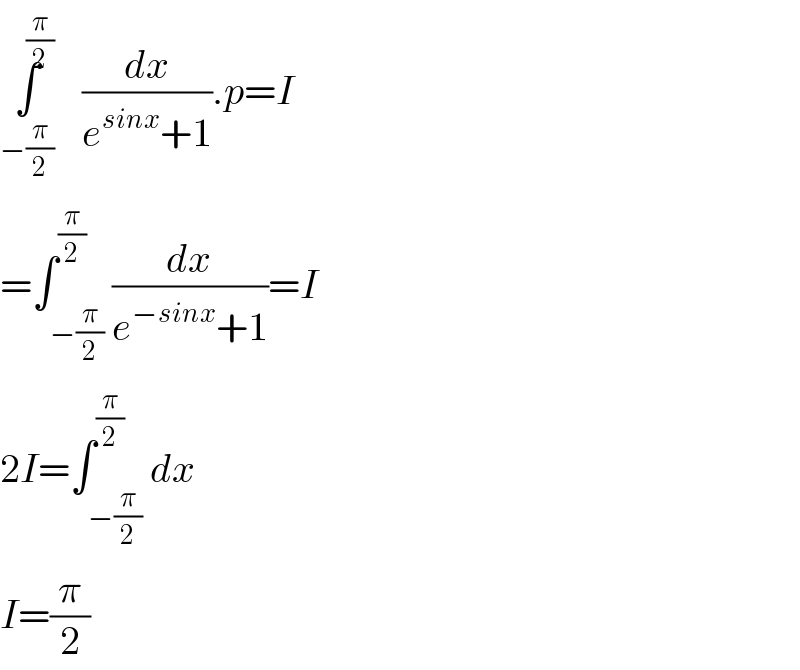
Commented by mathmax by abdo last updated on 01/Nov/20
![I =∫_0 ^(π/3) [(√3)tanx]dx changement (√3)tanx =t give tanx=(t/( (√3))) ⇒x=arctan((t/( (√3)))) I =∫_0 ^3 [t]×(1/( (√3)(1+(t^2 /3))))dt =(√3)∫_0 ^3 (([t])/(t^2 +3))dt= =(√3){∫_0 ^1 0dt +∫_1 ^2 (1/(t^2 +3))dt +∫_2 ^3 (2/(t^2 +3))dt} ∫_1 ^2 (dt/(t^2 +3)) =_(t=(√3)u) ∫_(1/( (√3))) ^(2/( (√3))) (((√3)du)/(3(1+u^2 ))) =((√3)/3)[arctanu]_(1/( (√3))) ^(2/( (√3))) =((√3)/3){arctan((2/( (√3))))−arctan((1/( (√3))))} ∫_2 ^3 ((2dt)/(t^2 +3)) =_(t=(√3)u) ∫_(2/( (√3))) ^(√3) ((2(√3)du)/(3(1+u^2 ))) =((2(√3))/3){arctan((√3))−arctan((2/( (√3))))} ⇒ I =arctan((2/( (√3))))−arctan((1/( (√3))))+2 arctan((√3))−2arctan((2/( (√3)))) =−arctan((2/( (√3))))−((π/2)−arctan((√3)))+2arctan((√3)) =3arctan((√3))−(π/2)−arctan((2/( (√3)))) we have arctan((√3))=(π/3) ⇒I =π−(π/2) −arctan((2/( (√3)))) I=(π/2)−arctan((2/( (√3))))(→c)](Q120655.png)
Commented by mathmax by abdo last updated on 01/Nov/20
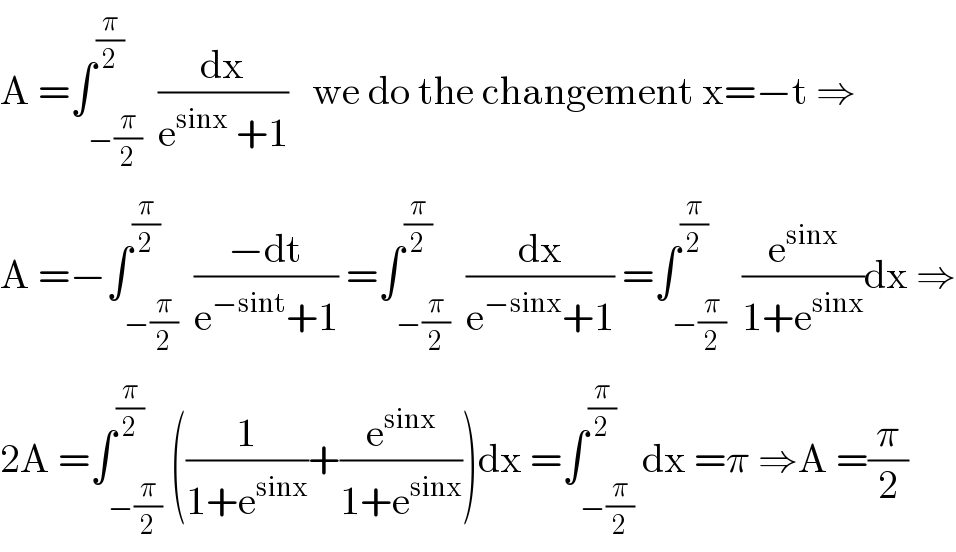
Commented by mathmax by abdo last updated on 01/Nov/20

Commented by TANMAY PANACEA last updated on 01/Nov/20

Commented by mathmax by abdo last updated on 01/Nov/20
![let f(x)=(1/n^3 ){[1^2 x]+[2^2 x]+.....[n^2 x]} =(1/n^3 )Σ_(k=1) ^n [k^2 x] we have [u]≤u <[u]+1 ⇒u−1 <[u]≤u ⇒k^2 x−1 <[k^2 x]≤k^2 x ⇒ Σ_(k=1) ^n (k^2 x−1)<Σ_(k=1) ^n [k^2 x]≤Σ_(k=1) ^n k^2 x ⇒ x Σ_(k=1) ^n k^2 −n <Σ_(k=1) ^n [k^2 x]≤x Σ_(k=1) ^n k^2 ⇒ (x/6)n(n+1)(2n+1)−n<Σ_(k=1) ^n [k^2 x]≤((xn(n+1)(2n+1))/6) ⇒ ((xn(n+1)(2n+1))/(6n^3 ))−(1/n^2 )<f(x)≤((xn(n+1)(2n+1))/6) we have lim_(n→+∞) (x/(6n^3 ))n(n+1)(2n+1) =xlim_(n→+∞) ((2n^3 )/(6n^3 )) =(x/3) ⇒ lim_(n→+∞) f(x) =(x/3)](Q120663.png)
Commented by mathmax by abdo last updated on 01/Nov/20

Commented by TANMAY PANACEA last updated on 01/Nov/20

Commented by TANMAY PANACEA last updated on 01/Nov/20

Commented by Bird last updated on 01/Nov/20

Commented by bobhans last updated on 01/Nov/20

